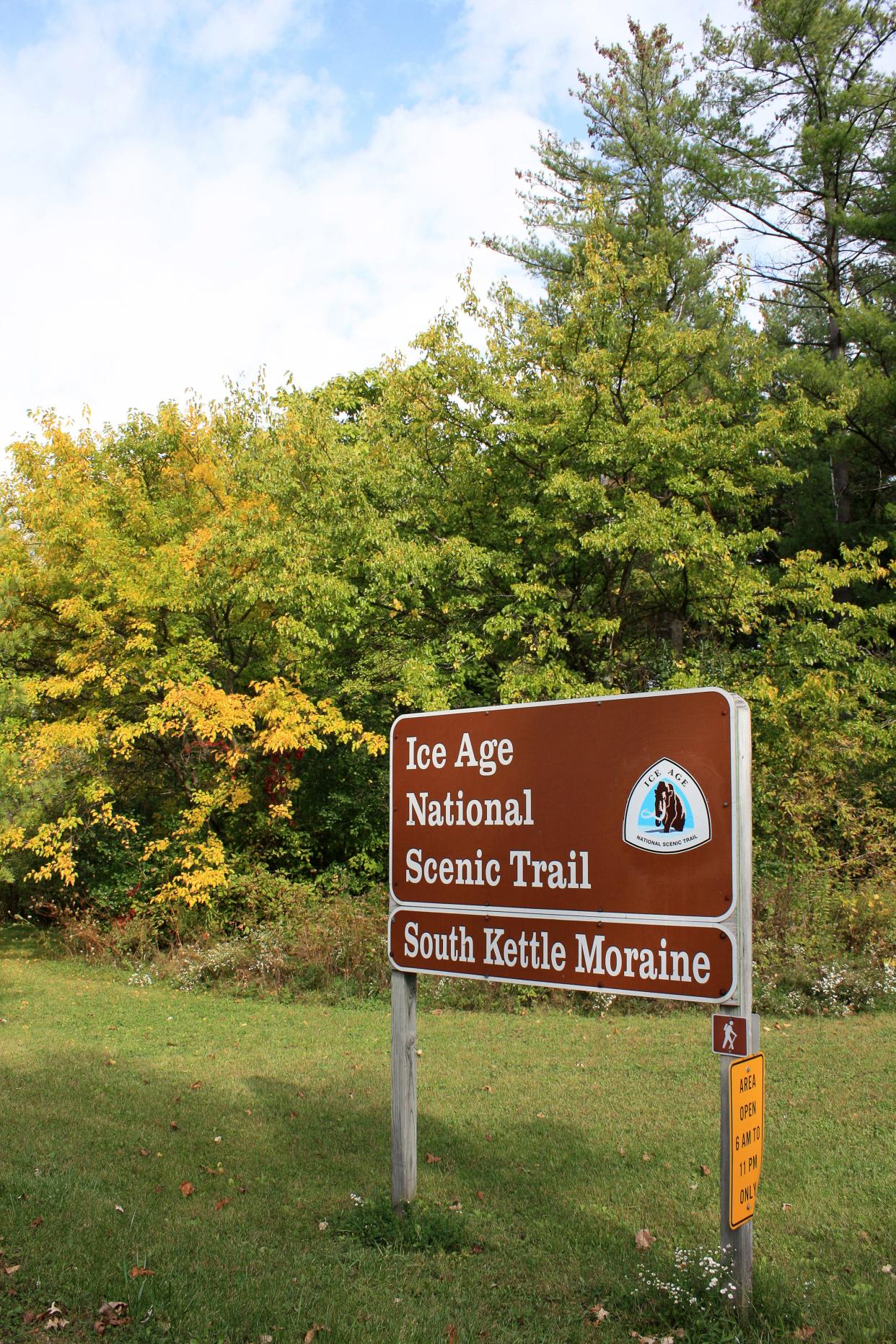Here's what you need to know about hiking on Wisconsin's 1,200-mile Ice Age Trail

The Ice Age Trail (IAT) is one of the most famous trails in the state and the country. Situated entirely in Wisconsin, it showcases some of the state's most treasured landscapes spanning over 1,000 miles.
If you're looking to get out and explore for a day or a month, here is what you should know about the Wisconsin trail.
How long is the Ice Age Trail?
The Ice Age Trail is approximately 1,200 miles. It traverses private land, city parks, state parks (like Devil's Lake), state forests (Kettle Moraine) and one national forest (Chequamegon-Nicolet). In total, the trail travels through 30 counties.
It goes as far north as Frederic (north of Minneapolis) and goes as far south as Janesville.
Where does it start?
The western terminus of the IAT is on the St. Croix National Scenic River in Interstate State Park. The eastern terminus is located at the Old Ski Hill Overlook in Potawatomi State Park along Sturgeon Bay.
Do I have to hike the entire thing?
No. There are over a 100 segments ranging from one mile to 15 miles, each with potential for day hikes with all types of terrain and distances throughout the state. They also intersect with many other state bike and hiking trails, state parks, state forests, and more.
You can find a map of the trail and its shorter segments here. There's also an interactive map with current trail conditions and a list of recommended day hikes.
Can I camp on the trail?
There are campsites and designated shelters for people looking to explore or thru hike on the trail. There is no backcountry camping allowed; however, there is a pilot program that has started to allow dispersed camping, or camping on public land outside of formal campsites, in few areas on the trail where there are no other convenient camping options.
For more information on dispersed camping and backpacking on the trail, visit here.
Are dogs allowed on the trail?
Mostly yes, but there are some places that dogs are not allowed depending on season and location. You can find more information here.
When was the Ice Age Trail created?
The idea for the Ice Age Trail came from Milwaukeean Ray Zillmer, according to the Ice Age Trail Alliance. An outdoor enthusiast and conservationist, Zillmer was responsible for the convincing two governors to increase land acquisition funding for Kettle Moraine State Forest.
In the 1950s, he had the idea of creating a larger, linear park that would extend beyond Kettle Moraine. In 1958, he founded the Ice Age Park & Trail Foundation (now the Ice Age Trail Alliance) to begin establishing what would become the Ice Age Trail.
Why is it called the Ice Age Trail?
According to the Ice Age Trail Alliance, colossal ice sheets, a type of glacier that covers a very large area, have gripped the the globe 15 times. Wisconsin's landscape was heavily shaped by continental glaciation.
The most recent period of the Ice Age came around 10,000 years ago, and it was known as the Wisconsin Glaciation. As that ended, a series of ridges formed between two immense lobes of glacial ice in southeastern Wisconsin. Stretching 120 miles long, crater-like depressions created large chunks of melting ice. Geologists named this region the Kettle Moraine, which first inspired Zillmer.
The natural features formed by this event are featured along the trail and throughout the state.
You can learn more about it here.
Why is the logo a mammoth?
According to the National Parks Service, mammoths were the largest animals living in Wisconsin during the Ice Age.
Who maintains the trail?
The Ice Age Trail is managed by a partnership among the National Park Service, the Wisconsin Department of Natural Resources and the Ice Age Trail Alliance.
What is a National Scenic Trail?
There are a total of 11 National Scenic Trails in the U.S., including the Ice Age Trail. These are long, multi-day hiking routes. They range from about 60 miles (Natchez Trace National Scenic Trail in Tennessee, Alabama and Mississippi) to about 4,600 miles (the North Country trail, a route that stretches from North Dakota to Vermont).
The IAT is one of only three National Scenic Trails that sits entirely within a single state.
What is the fastest someone has completed the Ice Age Trail?
There are various men's and women's records on the Ice Age Trail. The fastest someone has completed the trail is 21 days, 13 hours and 35 minutes, set by runner Coree Woltering in June 2020. The women's fastest known time is 21 days, 18 hours, and 7 minutes, set by Annie Weiss in September 2018.
There are also other versions of the records on the trail including self-supported (meaning they completed the trail with no outside support other than resupplying along the route) and thru-hiking the trail during winter, something only two people have ever done.
Drew Dawson can be reached at [email protected] or 262-289-1324.
Our subscribers make this reporting possible. Please consider supporting local journalism by subscribing to the Journal Sentinel at jsonline.com/deal.
DOWNLOAD THE APP: Get the latest news, sports and more
This article originally appeared on Milwaukee Journal Sentinel: What to know about hiking on the Wisconsin Ice Age Trail
